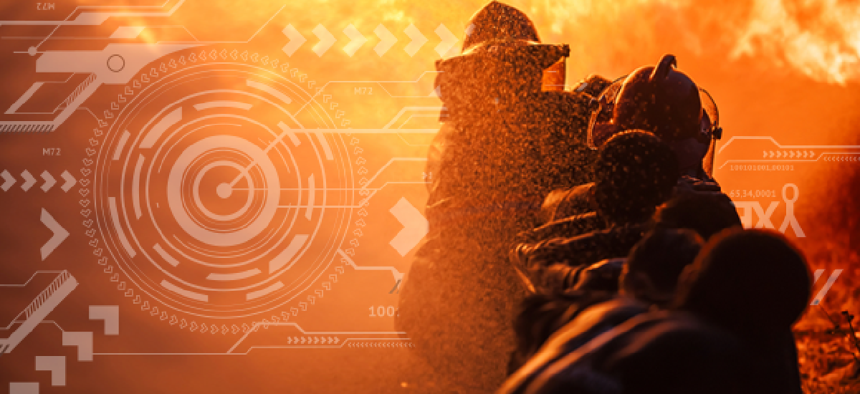NIST pushes augmented reality for first responders

The CHARIoT Challenge will award over $1 million in prizes for solutions that can emulate and transmit scenario-accurate data streams for augmented reality devices that will help public-safety personnel communicate and respond more efficiently.
The National Institute of Standards and Technology is looking for innovators who can build intuitive augmented reality (AR) interfaces based on internet-of-things (IoT) data streaming from smart buildings, city sensors and personnel monitors to provide first responders with real-time situational awareness.
NIST’s Public Safety Communications Research Division and its challenge partners launched the CHARIoT Challenge, which will award over $1 million in prizes for solutions that can emulate and transmit scenario-accurate data streams for AR devices that will help public safety personnel communicate and respond more efficiently.
The four-phase challenge has two related tracks – IoT and AR – and calls for data streams and interfaces that provide insights for decision-making and resource deployment in wildfires, floods, active shooter situations and tunnel collapses. The systems must support both incident commanders and responders in the field.
The IoT track requires contestants to develop emulations of smart city and personal-area network data streams – such as threat location, air quality, temperature and responder blood pressure -- that would be critical in the proposed emergency scenarios. After identifying the most appropriate sensors, hardware and data acquisition schemes, the narrowing field of contestants will to create emulated sensor data and transmit it over a wireless network. The best streams will serve as a core data element for participants creating AR interfaces for emergency scenarios.
The AR track participants, meanwhile, will develop or enhance augmented reality interface prototypes – heads-up displays and holograms -- in collaboration with a public safety agency. At the live competition held at a public safety training center, judges will use the AR interfaces to complete multiple first-responder tasks across the four simulated emergency scenarios.
Winning contestants will receive additional prizes and technical mentorship opportunities with key challenge partners, including Magic Leap, the First Responder Network Authority, FirstNet built with AT&T, MSA Safety and Blueforce Development.
More information is available here.
NEXT STORY: Fisheries sites move to the cloud






